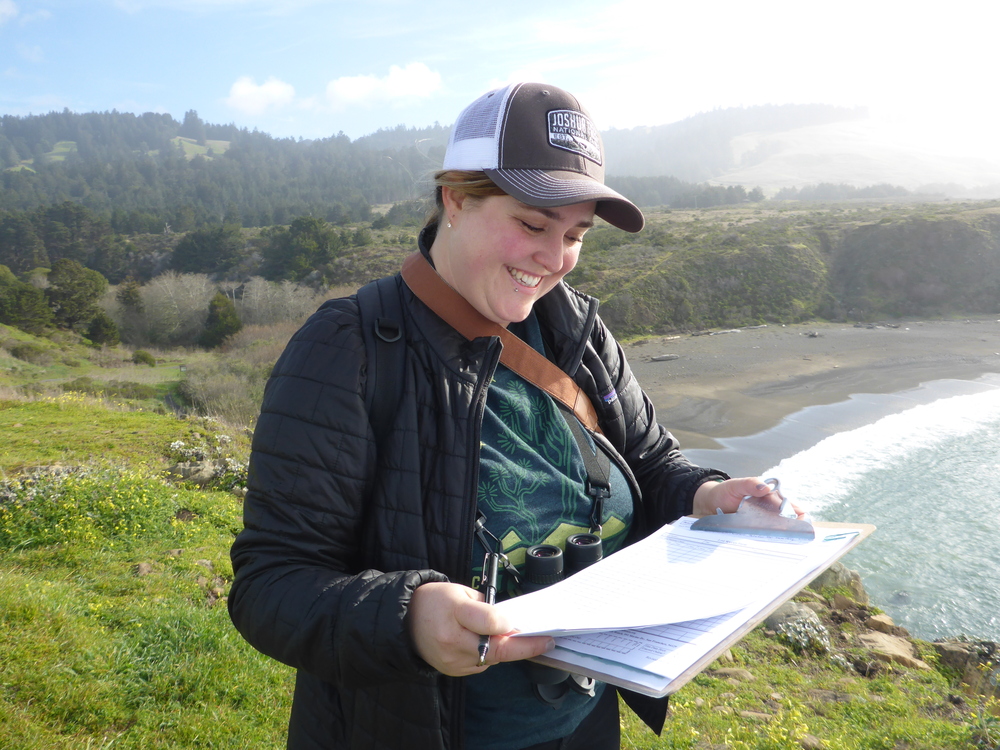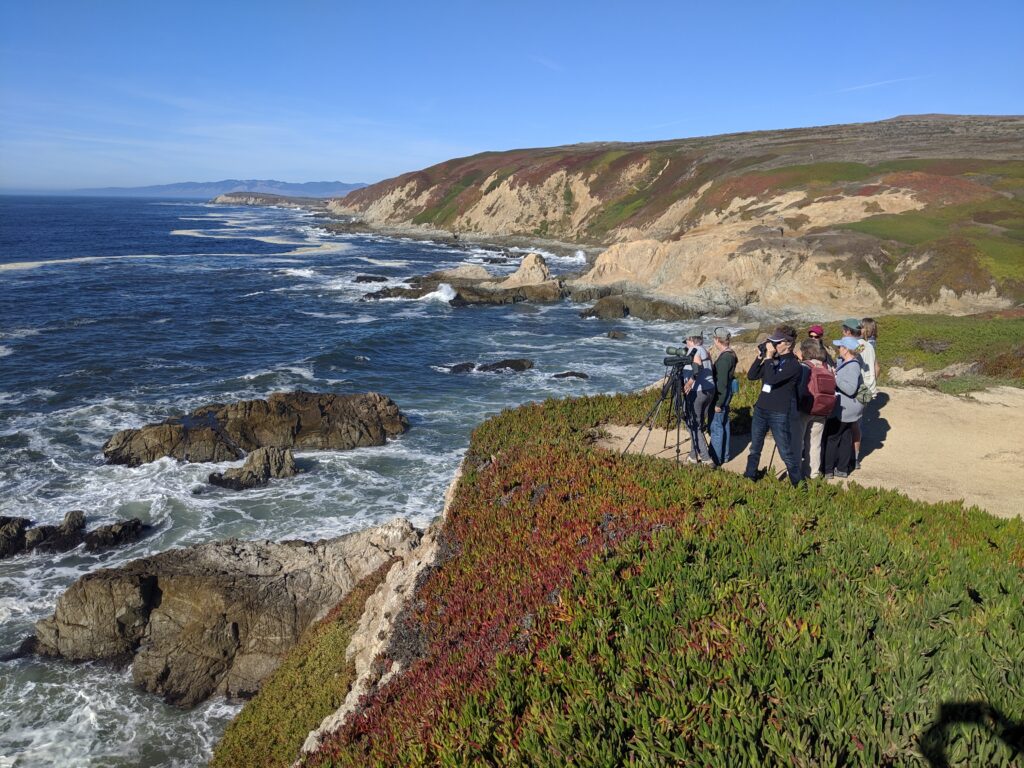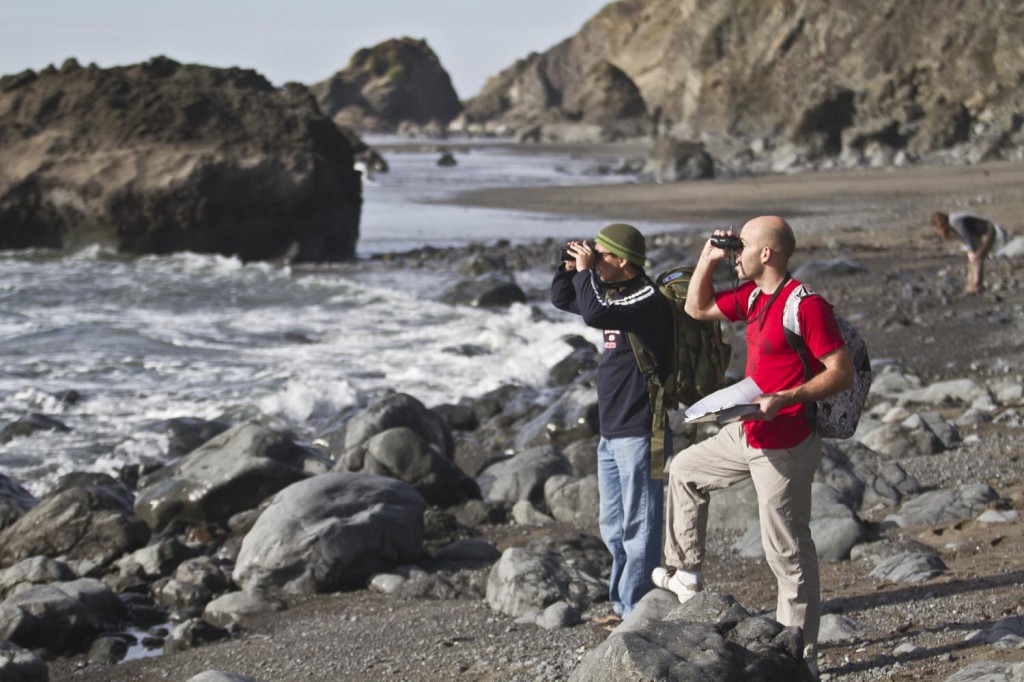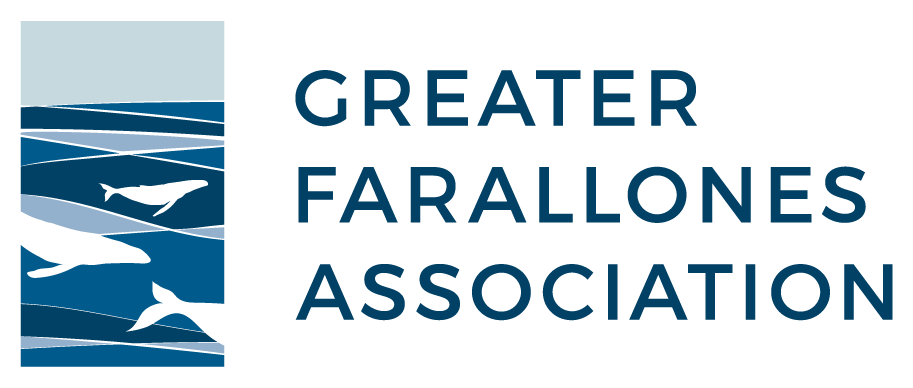Beach Watch Program Celebrates 30 Years of Coastal Monitoring

All along the coastline of Greater Farallones National Marine Sanctuary, community volunteers are playing a crucial role in stewarding this special stretch of the Pacific Ocean. They are walking their local beaches – often through dense fog or howling winds – to keep a finger on the pulse of the sanctuary by asking important questions: Have tarballs washed up with the tide? Are brown pelicans more abundant this year than last? How many surfers are using each beach?
Over long periods of time, the answers to questions like these begin to paint a detailed picture of life within and adjacent to sanctuary waters. And this picture, in turn, serves as an invaluable baseline to help sanctuary managers quickly identify when something has changed. It also serves a crucial aid in responding to emergency events like oil spills or ships that have come ashore.
These dedicated community members volunteer with Beach Watch, a program of Greater Farallones Association in partnership with Greater Farallones National Marine Sanctuary. Established in 1993, Beach Watch recruits and trains community volunteers to regularly monitor sanctuary beaches and record their observations.

A group of Beach Watch volunteers conducting a survey along the sanctuary coastline.
Volunteers undergo extensive training from local experts on how to identify and document sanctuary wildlife, oil and marine debris, sediment erosion and deposition processes, and human activities. Once trained, volunteers are assigned a beach to which they will return each month to monitor. They take note of which species they come across (alive or dead), what the beach wrack consists of, oil pollution, and how humans are interacting with the beach. In short, they are the eyes and ears of the sanctuary.
Renowned oceanographer Dr. Sylvia Earle once proclaimed, “These volunteers are forces for change and models of ocean stewardship, they’re extraordinary people, doing extraordinary things.”

Beach Watch volunteers collecting data.
Beach Watch is celebrating its 30th year of coastal monitoring this autumn. To demonstrate the great impact of the program and its committed volunteers, we have tallied up 30 years worth of observations and accomplishments.
Over the past 30 years, Beach Watch has:
- Completed over 25,000 surveys
- Contributed data to natural resource damage assessments of four major oil spills: S/S Cape Mohican (1996), T/V Command (1998), S/S Jacob Luckenbach (aka “Point Reyes Mystery Tarball incidents 1996-2002”), and M/V Cosco Busan (2007)
- Contributed data that have helped result in wildlife management agencies receiving over $52,000,000 in oil spill settlement restoration funds
- Trained 419 volunteers
- Provided 33,520 hours of volunteer training
- Had 3 volunteers serve for 30 years
- Received 148, 417 volunteer hours to conduct surveys
- Surveyed 195, 305 kilometers of coastline
- Published 10 peer reviewed papers
- Observed a total of 360 different species
- 275 bird species
- 26 species of marine mammals including:
- 10 species of dolphins
- 6 species of great whales
- 3 species of small toothed whales (Cuvier’s Beaked whale, Hubbs’ beaked whale, pygmy sperm whale)
- 6 species of seals and sea lions
- 2 species of otters
- 32 terrestrial mammal species
- 2 sea turtle species (leatherback and olive ridley)
- 7 shark species
- Observed 570 oiled birds
- Observed 154, 518 tarballs
- Observed 969, 700 human activities
- Observed 56, 406 surfers
- Observed 28, 404 dogs on leash
- Observed 80, 499 dogs off leash
- Observed unexpected animals being walked by humans including a cat, a rabbit, a pig, and a horse
- Observed the first northern hemisphere record for the kelp gull (Larus dominicanus) from South America
In honor of 30 years of Beach Watch, we are looking for 30 donations of $30 or more to help support this important work! Donate here.
Are you inspired to become a Beach Watch volunteer? Find out how here.

